Viasa 747s in 1:400 - Part 1, PH-BUG
- Jorge A. Zajia

- Feb 11, 2022
- 7 min read
Updated: Nov 11, 2022

Recently, Phoenix Models announced the release of KLM's PH-BUG in its split livery with Viasa from the early seventies. This brings the total number of Viasa 747s in 1:400 scale to four, though there are only two registrations represented by these models: PH-BUG and N749WA. Aeroclassics released one of each, while Magic released N749WA, and Phoenix PH-BUG.
Phoenix's release of PH-BUG was interesting as Viasa, and especially their split-livery aircraft, generally is Aeroclassics material. Although, it would not be the first time Phoenix impresses us, by showing some love to the fairly overlooked South American nation, as they are responsible for a beautiful Aeropostal 727-200 released in 2004. Additionally, with so many 747 classics that are long sold out, I find it an odd surprise that PH-BUG in KLM/Viasa colors was chosen by Phoenix.
With the new PH-BUG recently unboxed, I thought it would be a good opportunity to go back and review Viasa 747s in 1:400 scale.
PH-BUG, Orinoco
Delivered on December 15, 1971, PH-BUG was the last of the initial batch of seven 747-206Bs that KLM received. These aircraft all were christened with names of rivers, and KLM fittingly gave -BUG the name of Orinoco after Venezuela's largest river.
From the very beginning, Viasa requested help and guidance from KLM to become the flag carrier of Venezuela and position itself as a prominent airline in the region. KLM happily took the airline of the promising South American oil superpower under its wings, first developing the DC-8 program, and then putting Viasa at the forefront of the industry with an ambitious 747 program. The jumbo, however, quickly proved to be too big for Viasa, and the DC-10 was finally chosen as the airline's wide-body transoceanic flagship.
However, two KLM 747s, PH-BUD " The Nile," and PH-BUG "Orinoco," did operate for Viasa between 1972 and 1974 before the arrival of the DC-10s. -BUD was seen wearing Viasa stickers, while -BUG received full Viasa colors on the starboard half of the fuselage. This made Viasa the first airline in South America to put its livery in a 747 (at least one half of it) and to offer jumbo service.
Below is a picture of PH-BUD in Madrid wearing Viasa stickers (posted on Facebook by multiple users, copyright unknown), and a Viasa ad from the seventies showcasing service on PH-BUG.
While PH-BUG might have just been one of many 747s in KLM's fleet, when looked at from the Viasa side of the field, it is an icon that holds a paramount place in Venezuela's aviation history.
The Models

Aeroclassics released its version in November 2007, while Phoenix released theirs in January 2022. The Aeroclassics version has consistently ranked among the rarest 1:400 models, like most of their 747-100/200s. It is too early to tell if the Phoenix version will become as rare. It is the same unique aircraft, but the stigma that surrounds the Phoenix mould might put off a lot of collectors.
After looking at these models for a while I am not sure if one is definitely better than the other, to me they look more like two different representations of the same aircraft. The Aeroclassics 747 mould does have finer lines and a better shape, especially around the hump and nose section, and that alone goes a long way. Their model also has a nicer overall finish but is not perfect. Likewise, the Phoenix version has some nice attributes worth mentioning.

The nose section of the Phoenix example is probably the worst part of this model, especially on the Viasa side. Overall I don't think the Phoenix 747-200 mould is as ugly as the general consensus says it is, I think it is just different. However, the top of the cockpit (the forehead of the model if you will) is so poorly shaped that it does make the model look odd.
Additionally, the titles are notoriously compressed, and thus the font angle is too pronounced. The Aeroclassics font is also not perfect but initially looks better than the Phoenix version. Phoenix's orange might also be on the light side, but I don't think it is bad enough.
In this section of the model we can also see what I think is the worst mistake: the name is displayed as "The Orinoco," when in fact it was only "Orinoco." What is more puzzling, as you will see, is that the name is correctly displayed on the KLM side of the aircraft.

Aeroclassics' orange looks better and while the font also looks better, I don't think it is quite right either. I would say AC used the standard generic Viasa font, which looks acceptable, while Phoenix tried to match it to how it looks in pictures of this particular aircraft without fully refining their design. Phoenix's Viasa titles are better aligned with the upper deck windows and doors. Aeroclassics got the name of the aircraft right, though Phoenix's mistake is easily fixable. Of course, the Aeroclassics version looks nicer because the shape of their hump and nose section is near perfect. But if you are into antennas Phoenix has that for you.

I actually went ahead and removed the word "The" from the name of the Phoenix version while I brewed my second cup of coffee. It was a bit more involved than what I expected. I usually take models as they are, but this one was a fairly easy fix, and I was having a hard time getting over it. Conveniently enough, after fixing the name, the word Orinoco became correctly aligned with the 4th window ahead of the R1 door. On the Aeroclassics version the name is not properly aligned.
The real aircraft.

The tail section I think is one of the strong points of the Phoenix model. The angle seems to make less obvious the compression of the font, and this section of their mould does not look as odd as the nose does. The model also enjoys some printing details that the Aeroclassics version doesn't have, such as the APU intake and a more detailed aft section of the wing box fairing.

Another interesting thing that can be seen from this angle is the overwing reg. Overwing markings in general do not receive a lot of attention in scale models. In this case, neither manufacturer seems to have gotten it right, but I think Phoenix's is closer to the real thing. See pictures here for reference. Though not accurate, I do like Aeroclassics' blue overwing reg.
The real aircraft.
On to the KLM side.

I am obviously less critical of this side of the aircraft, but from what I can see, both manufacturers did a good job with the livery. Once again, the Phoenix one has a few extra details typical of modern times, and Aeroclassics's titles alignment in relation to the windows is better than on the Viasa side.

One thing I noticed, is that Aeroclassics omitted the flag trio under the cheatline on the aft section. I couldn't find any pictures of PH-BUG from that angle, in that livery, but by looking at other KLM 747s from that time, it looks like the flags should have been there since they were on the nose section of the aircraft.

Phoenix did put the flags there, but then again, it is difficult to be certain whether they were there or not. I'd say most likely the flags were there, making the Phoenix model correct in this area. It would not be the first time that ambiguity surrounds a vintage livery of which photos are difficult to find.
I think both manufacturers did a fine job on the livery design, printing, and alignment on the nose section. Note that Phoenix did display the name correctly on this side. I did not have to remove the word "The" like I did on the Viasa side, weird.
The real aircraft.
Finally a front view. Phoenix painted the fan blades in black, giving them a more realistic look. The dihedral also differs between both models. I think Phoenix's representation is more in line with how the wings hang while the aircraft sits on the ground in real life.

One last thing, while not a decisive factor, I do pay attention to the box of the model. I have to say that while LatinClassics boxes have a good-looking design, and the 747s that come inside them are top-notch, I do like a personalized touch. Phoenix's box artwork is nice, Caribbean (?) in the front and Dutch in the back, with some other nice details, but honestly I was expecting something better.

In Summary
The Aeroclassics version has a well-earned excellent reputation. The hump and nose section are spot on, and on a 747 replica that goes a long way. Its overall artwork design also looks nice, even though it is dated and rather basic.
Phoenix offers a promising product that takes advantage of a lot of the modern-day features, such as antennas, a more detailed landing gear, and more printed details. I also applaud them for trying to satisfy the unfulfilled demand for these ultra-popular classic 747s that have been sold out for years. However, it is a shame that their 747-200 nose section looks particularly odd, especially when seen from the side. I also think that a bit more tweaking of the Viasa titles, including more attention to color, would have produced a much nicer model.
I personally do not think Phoenix's 747-200 warrants the shower of harsh words that it constantly gets. When I look at it I see a detailed replica of a 747-200 in 1:400 scale, nothing more, nothing less.

Of course, I was very subjective when it came to purchasing the Phoenix version of
PH-BUG, as I try to get my hands on anything from Venezuela in 1:400 scale, everything else aside. I reckon that it is easy to have that collecting criterion since there are so few Venezuelan models. However, collectors that really would like to have a replica of this unique 747, and can't find or afford the Aeroclassics version, should get the Phoenix version without any reservations. Sometimes the aircraft's sentimental and historical value takes precedence over other factors.
This article was updated on February 20, 2021 to remove a statement indicating that the cockpit crew of PH-BUG was KLM's. After reading Captain Luis Emiro Cañas autobiography "Guiado por La Providencia" it became clear that there was a small group of senior Viasa pilots that did become qualified on the 747 by KLM, and operated the CCS-MAD-ORY segments.
Jorge A. Zajia


























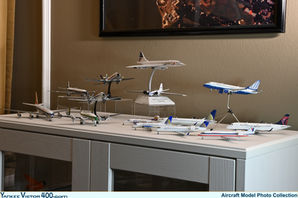
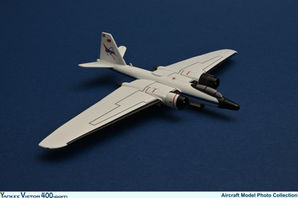


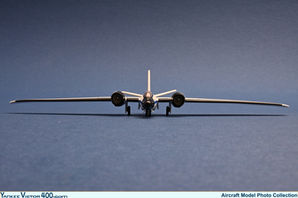


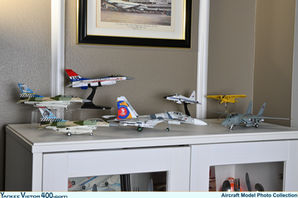

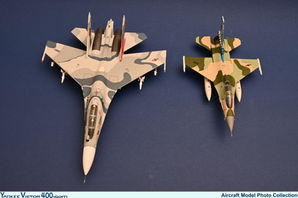
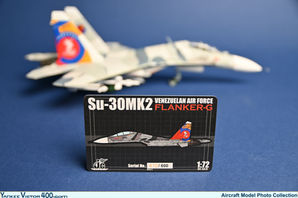
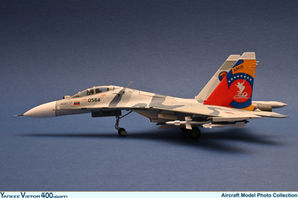










Comments